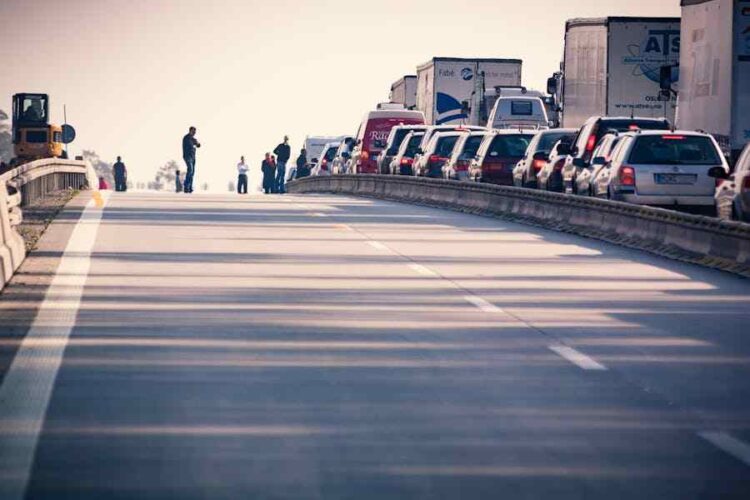When it comes to truck accidents, obtaining evidence to support a personal injury lawsuit is crucial. Unique traffic cameras can play a significant role in determining the cause of the accident and establishing liability. This information can be invaluable for a truck accident attorney when building a case to present to the insurance company, court, or jury, ultimately impacting the outcome of your claim.
Modern traffic camera systems are becoming more sophisticated, capturing clearer and more precise footage of accidents involving trucks and other vehicles. As a result, this objective evidence can undermine conflicting statements, help determine fault, and potentially increase your chances of receiving a fair compensation or settlement. It is essential to work with an experienced attorney who knows how to access and effectively utilize traffic camera recordings to support your personal injury claim.
In addition to traffic cameras, other types of video evidence such as dash cams or surveillance cameras from nearby businesses may also contribute to building a solid case. Your attorney can use these additional sources of evidence to help paint a clear picture of the incident, which will be crucial in negotiating with the insurance company or arguing your case in court. Overall, the increasing prevalence and complexity of traffic camera systems play a significant role in truck accident claims and can substantially impact the outcome of your case.
Understanding Traffic Camera Technology in Truck Accidents
Types of Traffic Cameras and Their Roles
Traffic cameras play a significant role in promoting road safety and accident prevention. There are different types of traffic cameras, each with unique functions:
- Red light cameras: These cameras are installed at intersections to capture images of vehicles running red lights, which can be crucial evidence in a truck accident.
- Speed cameras: Positioned near highways or areas with high-speed limits, these cameras help enforce speed limits and identify vehicles that exceed them.
- ANPR (Automatic Number Plate Recognition) systems: These cameras can identify stolen vehicles, track vehicles involved in hit-and-run accidents, and provide important data in larger accident investigations.
These technologies can greatly impact how cases unfold, especially when it comes to determining fault in complex accidents.
The Impact of Dash Cams and Surveillance on Claims
In addition to traffic cameras, dash cams and vehicle surveillance systems have become crucial tools for fleet managers, truck drivers, and insurance companies. These devices are installed inside vehicles to monitor driver behavior, improve safety, and potentially lower insurance premiums.
Dashboard cameras (Dash cams) are mounted on a vehicle’s dashboard and record real-time footage of road conditions, other vehicles, and the driver’s actions. They’ve become popular in the trucking industry, both for improving driver behavior and for accident investigation purposes.
Surveillance footage from other sources, such as nearby security cameras, can also provide essential video evidence in truck accident claims. This footage may capture an incident from multiple angles, giving investigators and insurers a clearer understanding of the accident.
Overall, the availability of video footage from traffic cameras, dash cams, and surveillance systems can significantly impact truck accident claims. It not only helps to determine fault more accurately but also encourages drivers to adopt safer driving practices.
Navigating the Legal Process of Truck Accident Claims
The Role of Evidence in Supporting Your Claim
In the aftermath of a truck accident, it’s crucial to gather and preserve evidence that supports your claim. This process involves obtaining important documents and records, such as the police report, medical records, and the truck driver’s logbook. The police report plays a significant role in establishing liability, while medical records can help substantiate your personal injury claim.
Other key pieces of evidence that can strengthen your claim include:
- Photographs: Capture the scene of the accident, vehicle damage, and any injuries you sustained.
- Witnesses: Testimonies from eyewitnesses can corroborate your account of the accident.
- CCTV and traffic camera footage: This can help demonstrate the circumstances leading up to the accident.
An experienced truck accident attorney can help you gather and analyze all pertinent evidence to build a strong case.
Negotiating with Insurance Companies and Trucking Companies
Dealing with insurance companies and trucking companies can be a challenging aspect of the truck accident claim process. Insurance adjusters and trucking companies often work to minimize their liability and the amount of compensation they pay out. It’s crucial to have a thorough understanding of the insurance claims process and to know how to navigate negotiations.
Here are some key steps involved in the negotiation process:
- Send a demand letter: After investigation, send a demand letter to the insurance company outlining your injuries, damages, and the compensation you’re seeking.
- Review insurance adjuster’s response: The insurance company will likely respond with a counteroffer, which can be significantly lower than your demand.
- Negotiate a settlement: With the help of your attorney, enter into a negotiation process, which can involve exchanging several offers and counteroffers until an agreement is reached.
If you cannot reach a settlement, your case may proceed to court, where a jury will decide the outcome based on the evidence and arguments presented by both parties. It’s essential to have an experienced truck accident attorney on your side to guide you through this process and ensure your interests are effectively represented. Many law firms offer a free consultation to discuss your case and provide guidance on the best course of action
In Conclusion
Truck accidents can lead to complicated personal injury claims; therefore, collecting reliable evidence becomes crucial. One valuable source of evidence in these cases is traffic camera footage. By accessing and analyzing these recordings, victims might have a better chance to demonstrate negligence and support their claims.
Various types of traffic cameras exist, such as fixed cameras at intersections or along highways, and dashcams installed in commercial trucks themselves. Fixed cameras can provide an unbiased account of the accident, while dashcams may help determine if the truck driver was distracted or driving carelessly.
To make the most of traffic camera evidence, it is important for victims to act quickly, since this type of footage may be deleted or overwritten after a certain period. They should involve their personal injury attorney early on, who can request access to relevant camera footage and analyze the material to build a strong case for negligence.
Finally, it should be noted that traffic cameras, though helpful, are not the only source of evidence in truck accident claims. To ensure the best outcome, victims should consider all available sources of information, including witness accounts, police reports, and truck maintenance records. However, the clear and objective nature of traffic camera footage remains an invaluable asset in establishing liability and seeking compensation for damages sustained in truck accidents.










